You may be wondering what .asd files are in Ableton Live.
Simply put, they stand for Ableton Sample Analysis File. They record metadata about each sample.
Each asd file will include certain parameters, such as warp marker, warp mode, transpose, and loop settings.
The problem is, these files can take up space (usually in your sample folder or wherever the original sample is stored) or look unsightly and disorganized in your sample folders.
In this article, I explain how to stop Ableton making asd files and how to hide them.
How To Disable asd Files In Ableton Live
Step 1: Go to Preferences
Go to Options (1), then select Preferences (2).
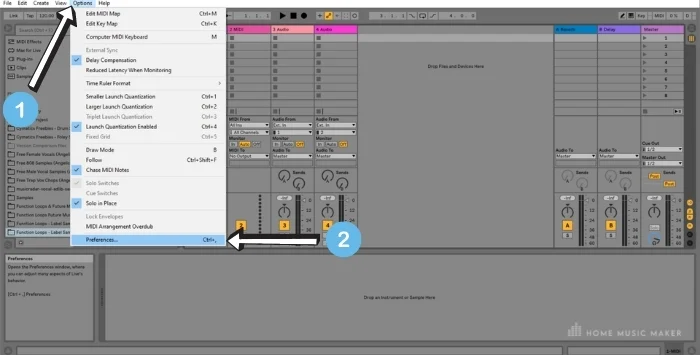
Step 2: Select File Folder
Once you have the Preferences screen loaded, go ahead and select File Folder on the tab to the left.
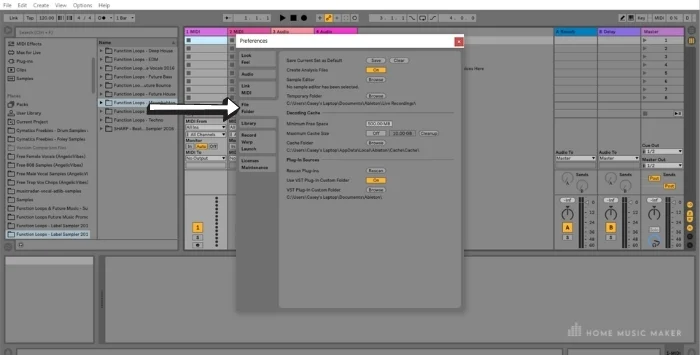
Step 3: Turn ‘Create Analysis Files’ off
Select the top yellow rectangle next to where it says Create Analysis Files.
Once you left-click on that box it will turn grey and show ‘off‘ instead of ‘on‘.
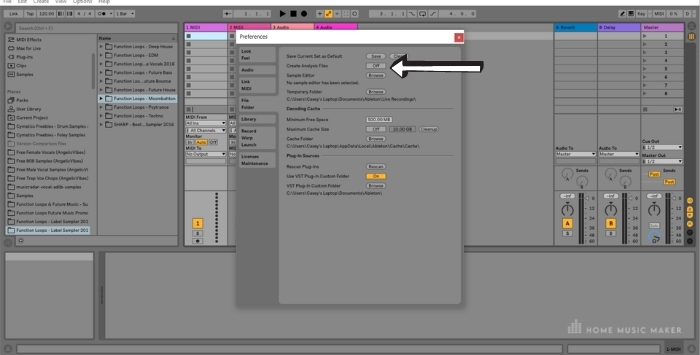
This way, Ableton will no longer automatically create an analysis file for each audio sample.
The consequence of suppressing the creation of .asd files is that Ableton will have to scan each sample individually when starting the project, which can be time-consuming.
In case you don’t want to disable .asd files from being made, you can hide those files in their respective folders instead.
This can help your sample files to look much tidier.
How To Hide asd Files In Ableton Live
To do that on Windows:
Step 1: Open Command Prompt
Hold the Windows key down and press ‘R. Then type in CMD and press Enter.
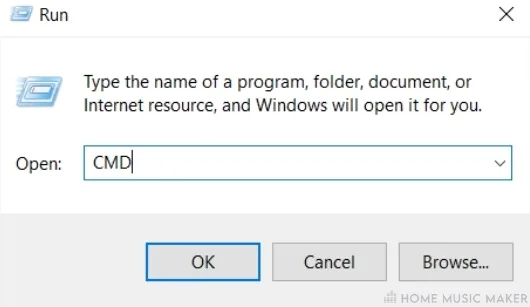
Step 2: Enter command
In the Command Prompt type ‘cd ..‘ (note that there is a space between cd and the ..) after the string line that says your username.
After you do that c:\Users> should appear.
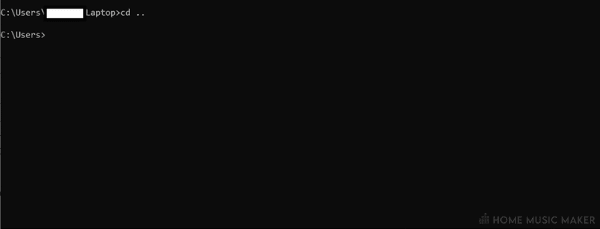
Step 3: Enter the next command.
Type in ‘cd ..‘ (between the quotation marks) again, then press Enter.
C:\> will appear.
Step 4: Enter the final command
Next to C:\> type in ‘attrib.exe +h /s *.asd‘ so that it looks like this: C:\ attrib.exe +h /s *.asd
Press Enter.

Now your .asd files should still be in their respective folders, but they will now be hidden.
For Mac os users, follow these instructions

Step 1: Search *.asd on your hard drive to find all the asd files.
Step 2: Open Terminal and type chflags hidden
Step 3: Drag and drop all the .asd files that Finder found onto the Terminal window
Step 4: Hit Enter
FAQ – How To Stop Ableton Making ASD Files
Can you delete asd files?
You certainly can! However, it is not typically advisable to do so. Each asd file stores important information about your samples so that when Ableton Live loads it, loads can quickly check certain parameters about your sample. In a nutshell, if you delete the files Ableton has to reassess each sample when it loads – causing longer load times. However, if you are an incredibly productive music producer, you may wish to disable .asd files or delete them if they start blocking your hard drive. That said, .asd files are typically tiny – only about 20kb.
Do you need to keep every Ableton asd file?
For each new Live set or project folder you will work on in the future. I advise keeping them. For an older Live set that will no longer see the light of day, you can go ahead and delete each asd file for those projects. Just find the folder where your samples are stored for those projects and manually delete each asd file.
How do you convert a WAV file to asd?
Asd files are automatically created for WAV files, as they are samples. Therefore, you do not need to convert WAV files to asd manually. If you are want to make sure that .asd files are being made automatically, check to see if they are by going to Options, then Preferences, File Folders, and check to see if the Create Analysis Files button is turned on (showing yellow).
What do asd files do?
ASD files are metadata files that store all kinds of parameters about your audio sample. For example, transpose, loop selector, warp marker, warp mode as well as warp markers.
What is the purpose of the .asd sample analysis files created by Ableton?
Asd files allow Ableton to quickly scan for important data about each audio sample when you load Ableton. It makes for a quicker load time., which is always important when trying to be time-efficient in your music production. It also helps to improve the overall export time it takes to export your project.
Where is the original asd location?
Typically this will be where your store your samples. So wherever you store your samples is where the .asd files will be stored. If you have a general samples folder, you can check where it is by selecting Options, then Preferences. From there, select ‘Library.’ That is where you will find your sample packs directory. If your sample packs are stored in different folders you can find the directory of your samples by right-clicking on the sample pack in the pack library on the left of the DAW and selecting ‘Show in explorer‘. This will show you where your samples are, as well as the .asd files for those samples.
What does ADG mean in Ableton?
They are Ableton Device Group files. They are a file type unique to Ableton, which stores information about virtual instruments and effects racks.

 Want to connect with other music producers for help and guidance?
Want to connect with other music producers for help and guidance?